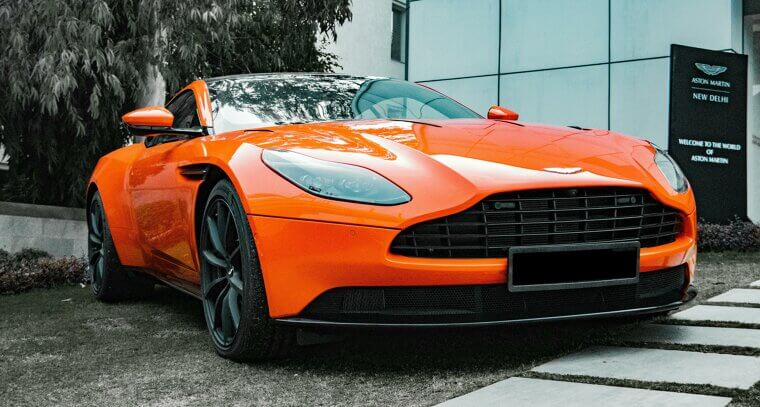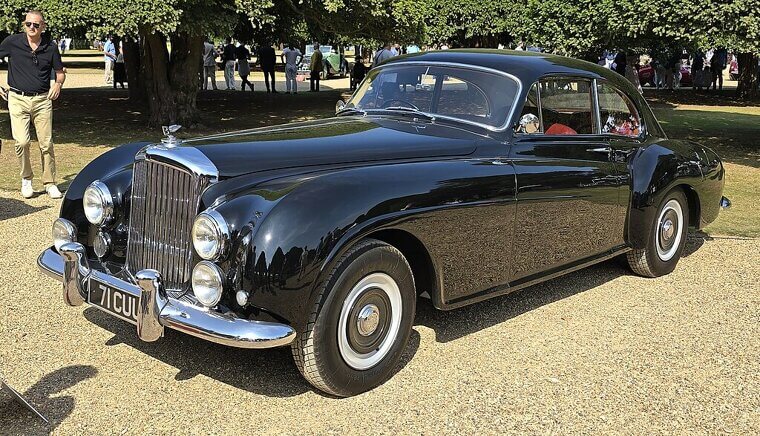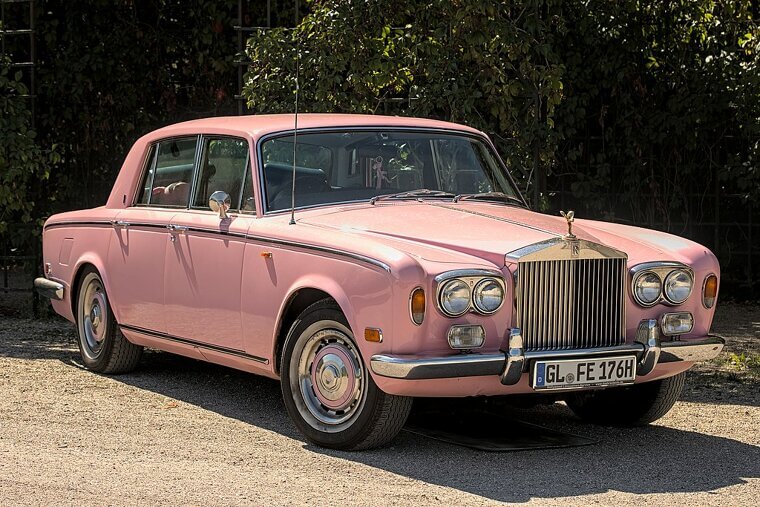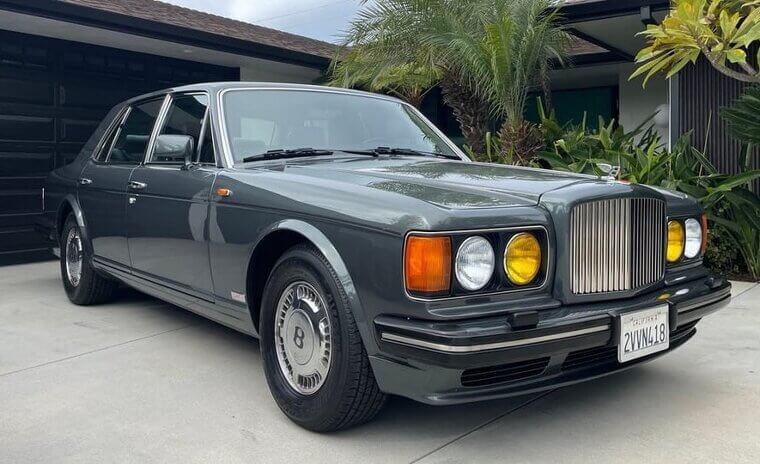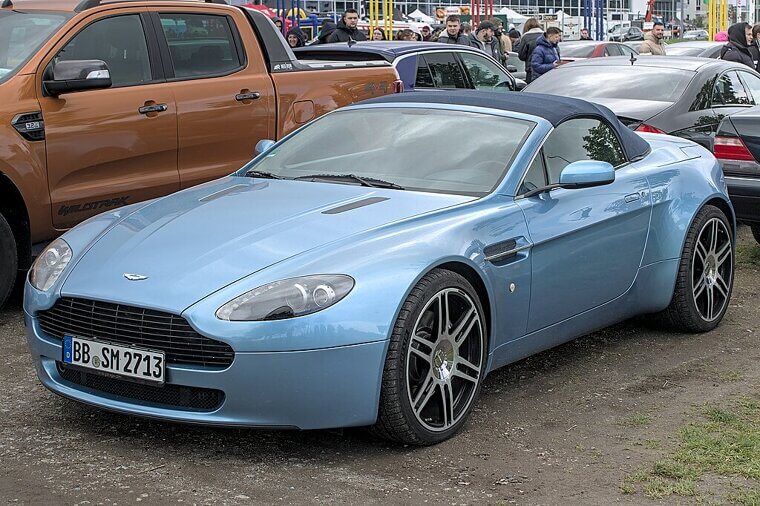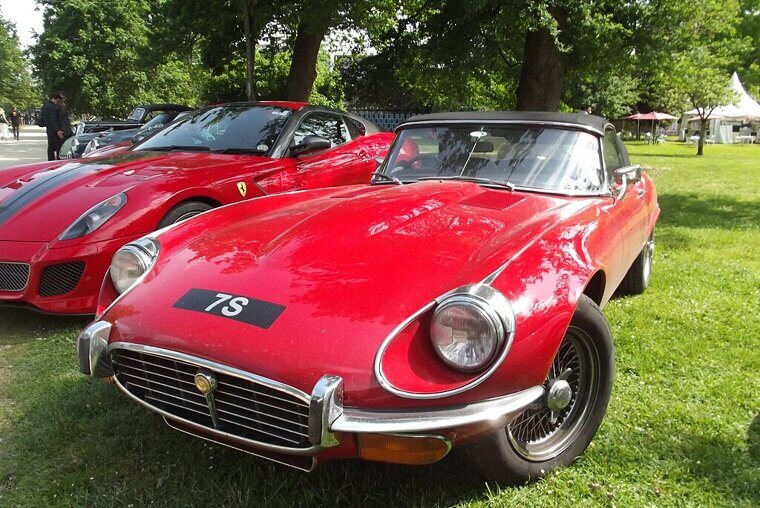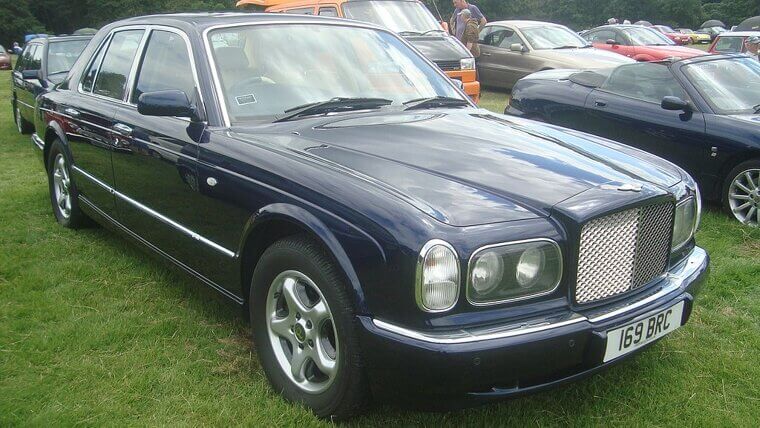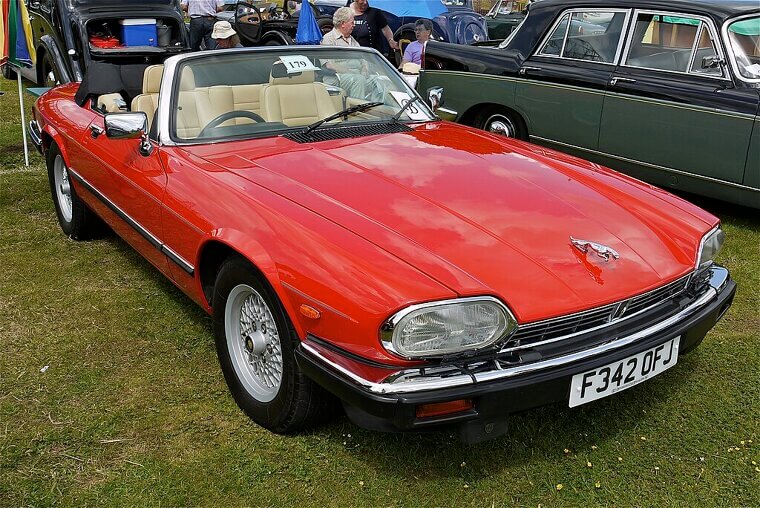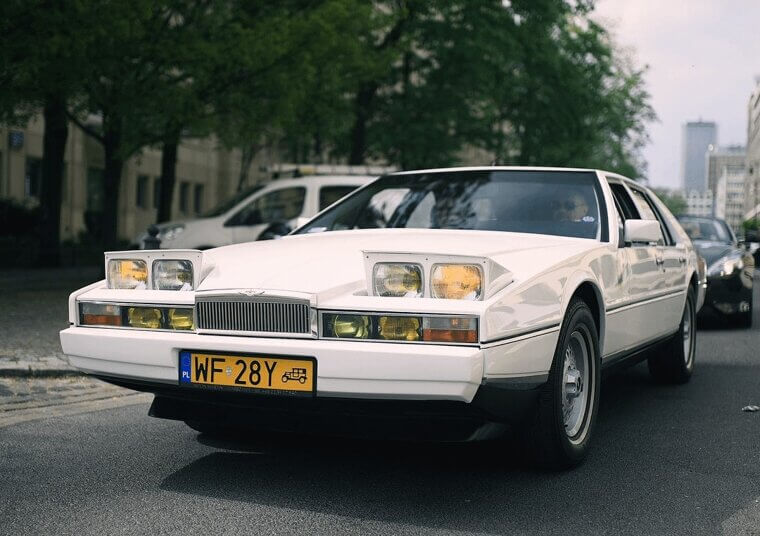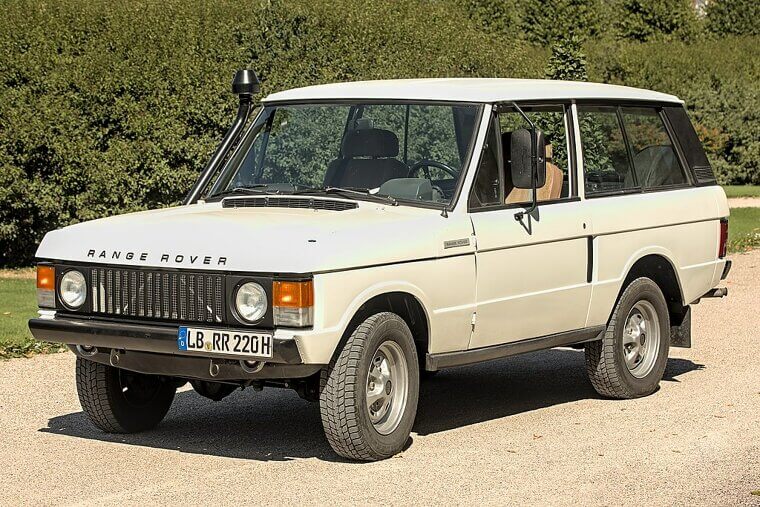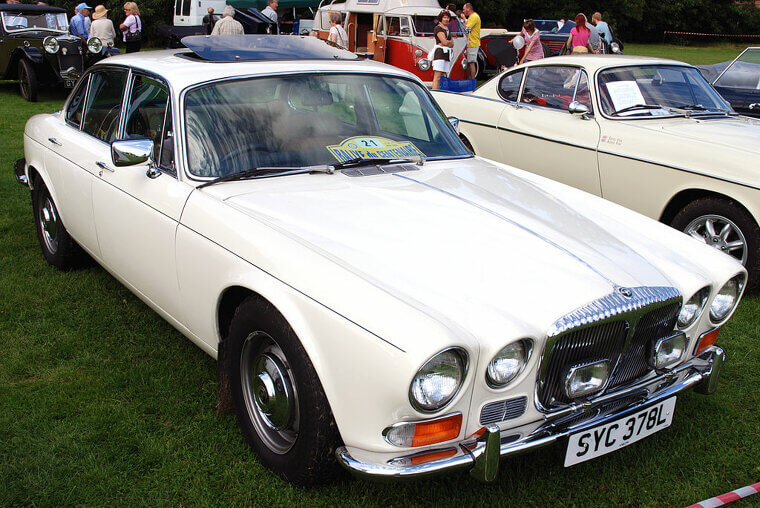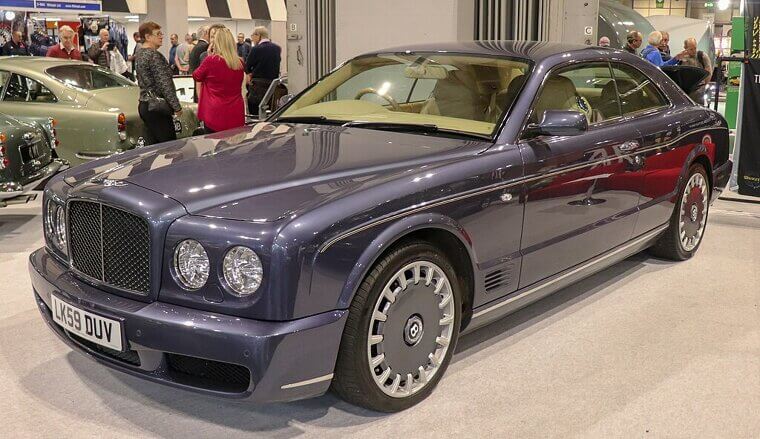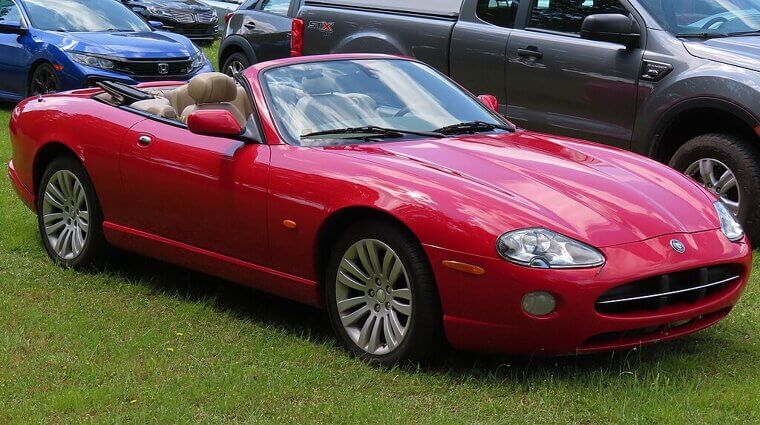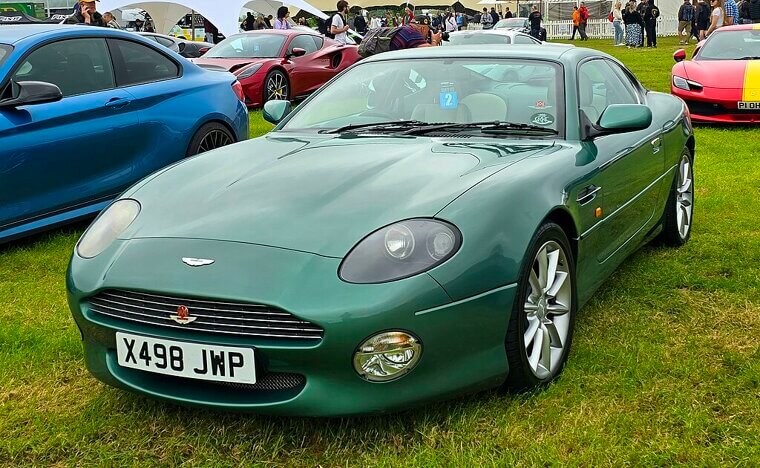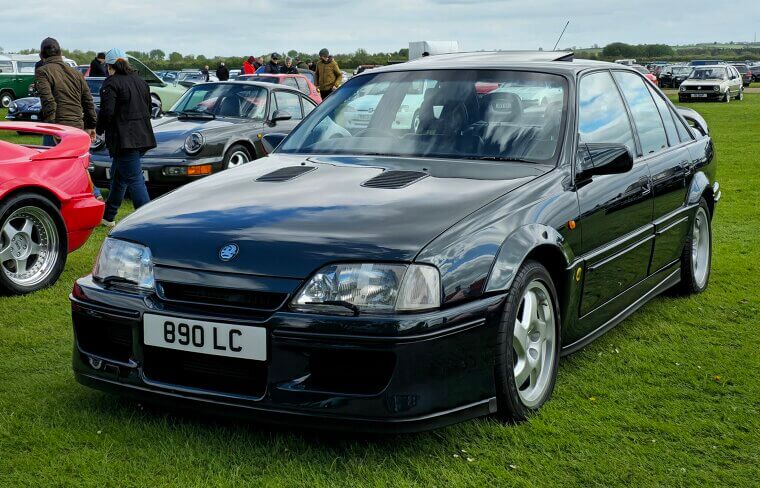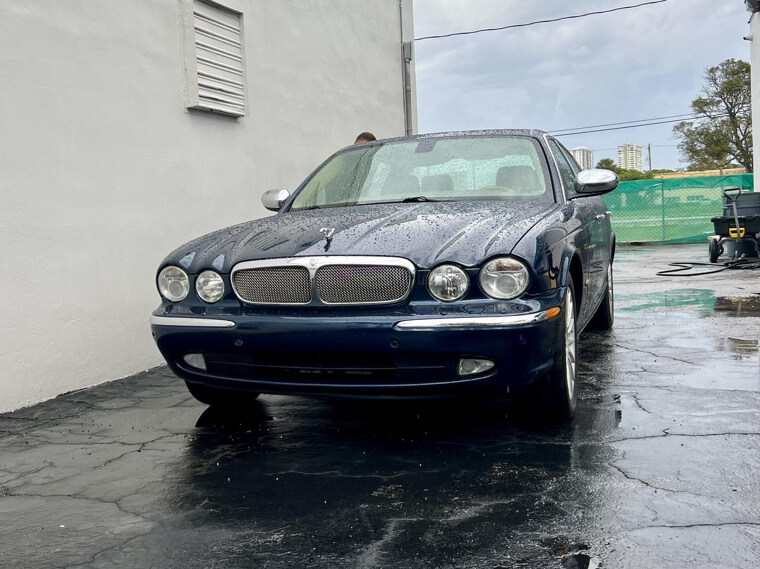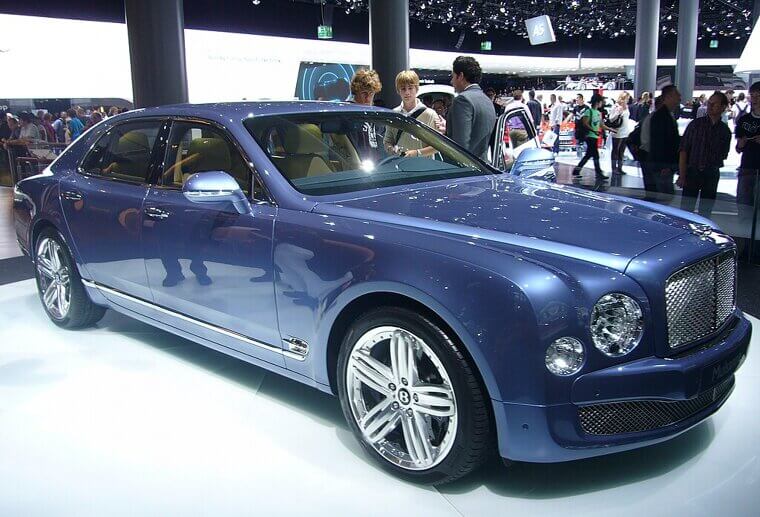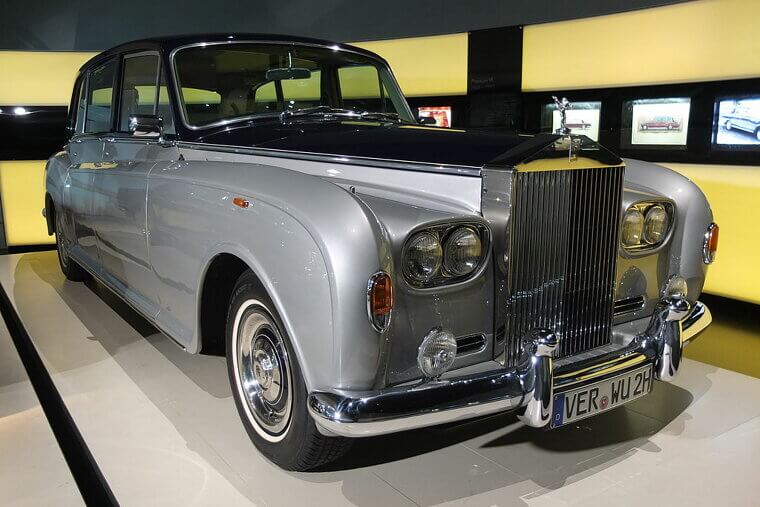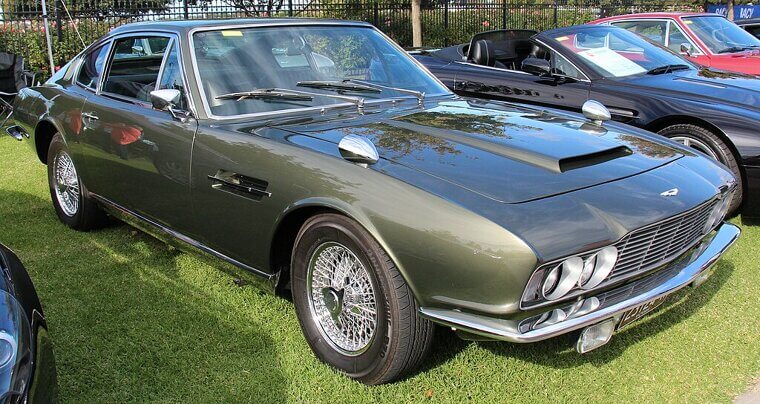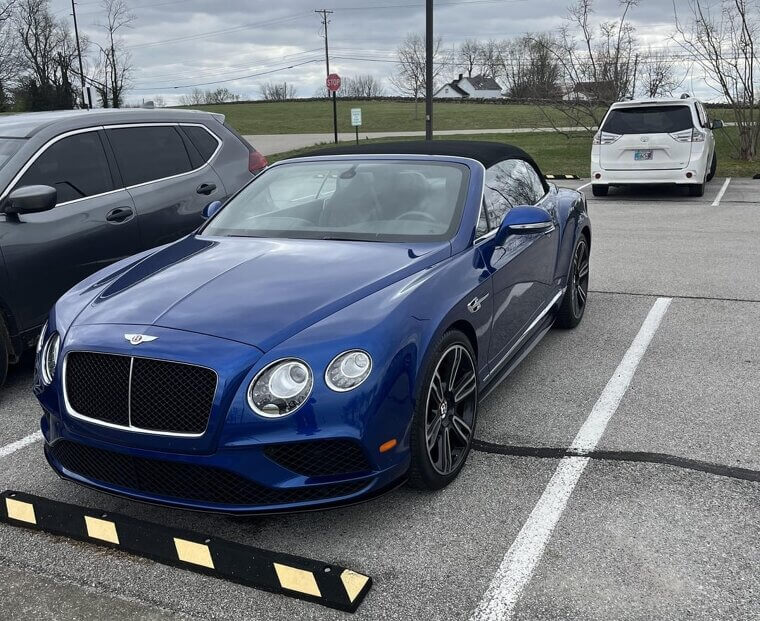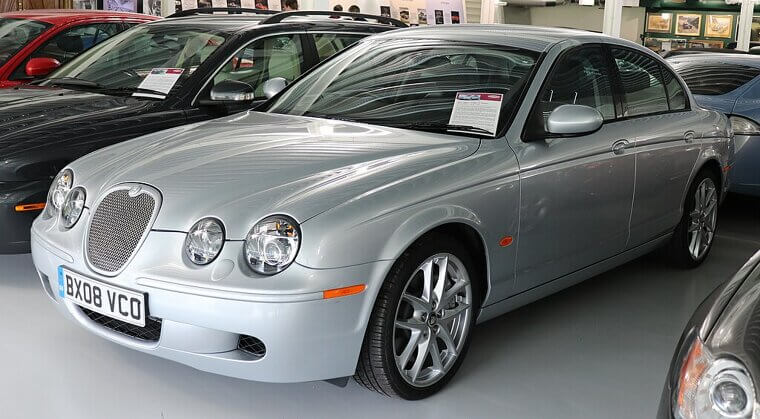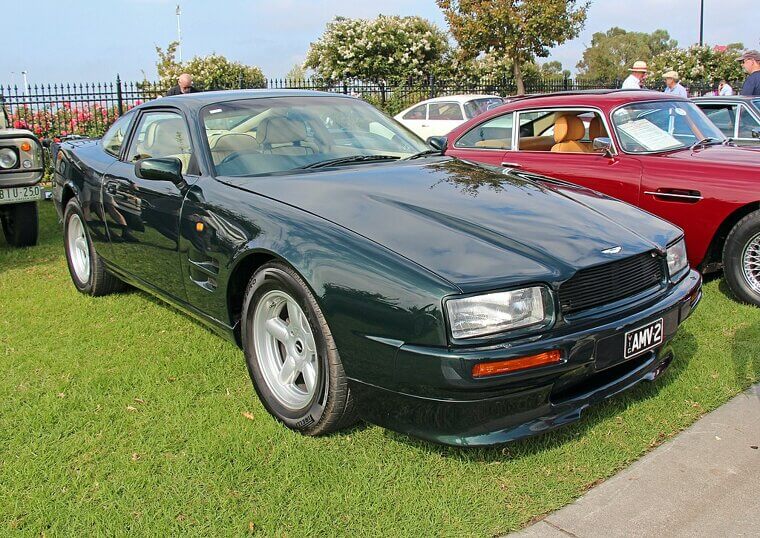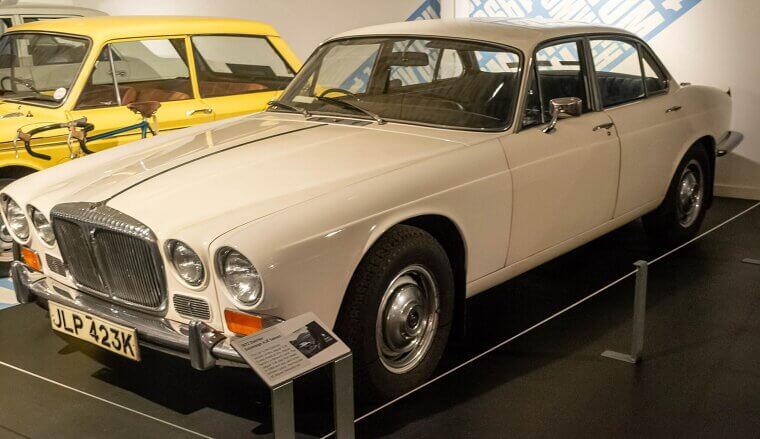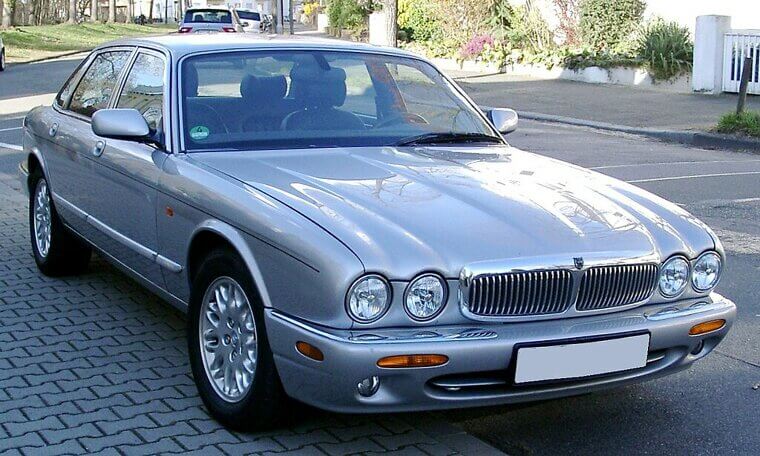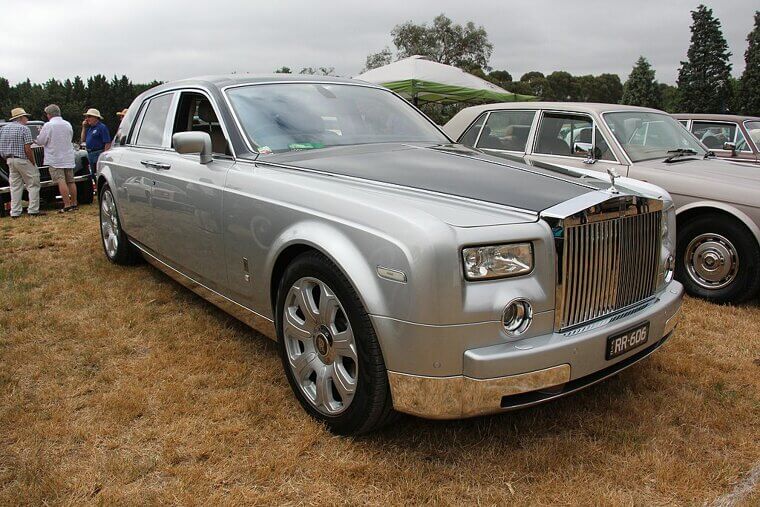British Luxury Cars Were Made to Last
When you think of classic British luxury cars, you probably picture class and elegance, like the beautiful rides featured on James Bond. And you’re not wrong; there have been some illustrious cars rolling out of that side of the pond, from the slinky Jaguar to the illustrious Rolls-Royce and the esteemed Aston Martin. They have some solid examples of engineering, too - you can find impressive craftsmanship behind the impeccable style, the kind that looks at other country’s brands and says, “hold my tea” (in a classy accent, of course). Let’s explore some of the models that have aged like fine wine and stand out among today’s modern offerings.
Bentley Continental R (1991–2003)
When Bentley released the Continental R it was to prove a point: that a luxury car could also pack power under its hood, and as classy as it was, it didn’t pull any punches! Its elegance hid a massive 6.75-liter turbocharged V8 engine for smooth, sophisticated muscle.
The Continental R was designed for purposeful power cruising, and, alongside its adjustable air suspension for added comfort, it offered that in spades. It was among the first Bentleys to provide turbo charging on top of refinement, and in a handcrafted finish, too. No wonder it was the choice for society’s elite!
The Continental R was designed for purposeful power cruising, and, alongside its adjustable air suspension for added comfort, it offered that in spades. It was among the first Bentleys to provide turbo charging on top of refinement, and in a handcrafted finish, too. No wonder it was the choice for society’s elite!
Rolls-Royce Silver Shadow (1965–1980)
Prior to the Silver Shadow, Rolls-Royces were body-on-frame designs, but this model was the first of its kind to feature a fully monocoque chassis. That wasn’t its only unique feature, though; it pioneered the self-levelling hydropneumatic suspension, which offered a silky smooth ride for every occasion. Combined with the Silver Shadow’s power disc brakes (a huge advantage in its era), the innovations gave it a luxury feel, keeping its ride plush and modern for decades. If you’ve seen a movie featuring “old money” characters, they probably drove a Silver Shadow.
Jaguar XJ Series I (1968–1973)
Before Jaguar released the XJ Series I they hadn’t made a luxury saloon since the ’50s, but the wait was worth it - this baby was so sleek and aerodynamic that it has influenced countless other Jaguar designs since, and still does in the modern era. It moved like its namesake, too - many of its contemporaries were bulky, so when Jaguar released the comparatively lightweight XJ, it felt sharper and more agile than other models on the market. Independent rear suspension and its disc brakes all added to the feeling of a suave ride with irresistible sporty handling.
Bentley Turbo R (1985–1997)
On the surface the Turbo R offered the classic Bentley Mulsanne shape, but under the hood it concealed a hidden weapon: one of the brand’s first turbocharged V8 engines capable of 300 horsepower (hp), with a tag team of improved suspension and wider tires to grip the road in compensation. The Turbo R wasn’t about showy muscle, though; its vibe was concealed power for real drivers, who knew they could burn rubber without having to shout about it. It acted as a bridge between classic luxury and modern performance, and is largely considered one of the best-handling Bentleys ever made.
Aston Martin V8 Vantage (1977–1989)
When the supercar craze kicked off, Aston Martin threw its hat into the ring with the V8 Vantage, one of the original British muscle cars that could flex with the best of them. Its aggressive style is rough around the edges today, but its rugged charm still turns heads! As its name suggests, the Vantage was ripped - its fuel injection and 5.3-liter V8 engine could deliver over 400 hp on some models, making it one of the fastest production cars of its day without sacrificing elegance. James Bond famously drove one in "The Living Daylights,” officially making it a spy car.
Jaguar E-Type Series III V12 (1971–1975)
While the Series I is the OG E-Type, the Series III took everything that was great about it and magnified it, while keeping the same elegance it was famous for. The V12 in the name of course refers to its growling engine; a first for Jaguar road cars. It didn’t just have the voice though - the Series III was also a real looker! Malcolm Sayer created a timeless stunner, with a long bonnet, dramatic headlamps and curves in all the right places. It even had a spacious interior, marrying sports performance with luxury.
Rolls-Royce Corniche (1971–1995)
Rolls-Royce is known for its stately presence, and the Corniche was no exception - it carried on the grand tradition, but as a convertible coupe it provided a more approachable feel. That was a rare combination for the brand, but it managed to stick the landing perfectly. Vehicle designer Mulliner Park Ward handcrafted the earlier models, adding another layer of exclusivity to the Corniche - the interiors in particular featured rare leather and wood. Power windows and air conditioning in a time when they weren’t practically mandatory were the cherries on the top.
Bentley Arnage (1998–2009)
When the Volkswagen group took ownership of Bentley, the Arnage was the first car it produced, proving it meant business. VW took the classic Bentley soul and shored it up with impeccable modern engineering - its tech, reliability and a powerful engine made it a sleeper classic. Originally packing a powerful V8, the Arnage was later given an even more potent turbo version for both speed and comfort. On the tech side, it had air suspension for a smoother ride backed by advanced electronics, giving the best of both worlds: traditional engineering and modern flair.
Jaguar XJ-S (1975–1996)
When it first released, the XJ-S stirred up controversy for its departure from Jaguar’s usual fair. The E-Type practically had its own religion, so when this model replaced it, it was already under scrutiny for its less curvy form. It was underappreciated in its time, but all that’s changed! It was one of the forerunners for British technology in its day, particularly for its digital dash and electronic fuel injection. Thanks to a long production run, the XJ-S has been refined over the decades and now stands as a solid and reliable addition to Jaguar’s history.
Aston Martin Lagonda (1976–1989)
The Lagonda divided opinions on its quirky, futuristic aesthetic, but those who dug its oddball design really loved it. It was also rare - although it was never a mainstream success, there were only around 600 Lagonda units ever made, and it became something of a British retro futurism icon. It dared to be different, and it had the tech clout to match its unique appearance. It was one of the first production cars to feature a selection of advanced features, such as a digital dashboard and touch-sensitive controls, making it feel like the spaceships it was emulating.
Range Rover Classic (1970–1996)
Before luxury SUVs were even classed as a genre, the Range Rover Classic was leading the way, and it was doing so with ample amounts of comfort and style. However, it also managed to be rugged on the outside, with proven 4x4 capability and a boxy, stalwart design. The Range Rover Classic was actually one of the first SUVs to offer such a luxurious interior, complete with leather seats, power windows and a ride that was smooth instead of choppy. It proved that off-roaders can combine practicality and comfort without sacrifice, and its longevity is testament to that.
Daimler Double Six (1972–1992)
With a name harkening back to the pre-war 1920s Daimler Double Sixes, this model brought the moniker to a new era for what was essentially a luxury version of the Jaguar XJ saloon. Despite evolving over its 20-year production run, the Double Six stayed true to its elegant form. Even by today’s standards, the Double Six’s V12 engine is buttery smooth, quiet and surprisingly powerful, but the luxurious interior also brings home the prestige - leather and wood combine to evoke a drawing room feel that effortlessly radiates timeless class.
Rolls-Royce Silver Spirit (1980–1998)
The Silver Spirit was a modern update to the Silver Shadow, bringing a boxier style that has stood the test of time and still remains fashionably vintage. The SZ platform was among the Shadow’s other performance enhancements - an incredibly smooth self-levelling suspension is one of the most significant. Because they were so robust, you can still find many Silver Spirits in excellent condition and they’re low-level collectible, which means they’re an affordable portal into the world of vintage classics. The series has even reached global recognition - an updated version of the Spirit, the Silver Spur, appeared in “Miami Vice.”
Bentley Brooklands (1992–1998)
A close relative to the Turbo R, the Brooklands kept the same proportions and craftsmanship, but upped the dose of comfort for the luxury-focused market. That doesn’t mean it skimped on the muscle though; the Brooklands packed a Bentley-approved and torque-happy 6.75-litre V8 engine. Although the turbo arrived in 1996, the earlier Brooklands models had no forced induction which lowered running costs and appealed more to those who preferred cruising over bruising. Yet Bentely hadn’t forgotten their racing heritage - the name “Brooklands” is a reference to the famous Surrey racetrack.
Jaguar XK8 (1996–2006)
A modern take on the classic Jaguar XJS, the XK8 was a grand tourer for the modern era, a curvier, sportier design that still retained the retro-modern aesthetic in a nod to Jaguar’s past. It was also among the first Jags released under Ford ownership, meaning improved reliability and build quality. Yet the XK8 wasn’t all show - it had growl and claws as well! In fact, it was also the first Jaguar model in decades to feature a V8 (in this case, the AJ-V8 engine), bringing character to the car. In “Die Another Day,” a kitted-up Jaguar XKR duels Bond’s Aston Martin!
Aston Martin DB7 (1994–2004)
The DB7 leveraged Ford’s funding to revive Aston Martin for the ’90s market with a winning combination of reliability and glamor. Designer Ian Callum came up with the concept, and he created a beautiful, curvaceous car that turns heads three decades on! But the DB7 wasn’t just designed as an art piece - it was created as a usable daily vehicle, powered by a subtly muscular inline-six engine that snarled in a British accent. Aston Martin knew they were onto a good thing, and created more DB7s than other previous models.
Lotus Carlton (1990–1992)
Lotus took a Vauxhall Omega and gave it a supervillain alter ego as the Carlton, the world’s fastest saloon (at its time of manufacture, anyway). Its flared arches and dark paint gave it subtle menace - it didn’t have to be loud and aggressive, it just radiated attitude. It could back up its vibe, too - Lotus stuffed the Carlton with a twin-turbo 3.6-litre straight-six engine that could make 377 brake horsepower (bhp) and a top speed of 176 mph, so it was faster than many ’90s Ferraris! The British Press and government hated it; engineering rebels loved it.
Jaguar XJ (X350) (2003–2009)
The X350 retained the beloved Jaguar shape but was the first of its kind to wrap it up in a body made entirely from aluminum, which gave it a good 200kg weight advantage over its rivals and made it more performant. There were complaints over its retro look at launch, but in hindsight it’s become beloved as the last XJ before tech took over. It still had some advancements, though; the air suspension and adaptive damping made it an ideal ride for Jag fans.
Bentley Mulsanne (1980–1992)
Back in the ’20s, Bentley dominated the Le Mans circuit, and this model is named for the Mulsanne Straight, a high-speed section of the course. What’s more, it was the brand’s flagship vehicle, created with the intention of providing Rolls-Royce luxury - with added speed. They achieved it too; the interior was wood-panelled, the ride smooth and the 6.75-litre V8 engine added the roar that Bentley was famous for. It got even more bite later on with the introduction of the Mulsanne Turbo which, for the time, offered ferocious speed.
Rolls-Royce Phantom VI (1968–1990)
In a classic showing of opulence and exclusivity, Rolls-Royce built the Phantom VI in limited numbers and most of them were used as ceremonial or state vehicles. It was huge, majestic, and wasn’t chasing trends - it was built to look vintage, and it remained so throughout its production. Initially packing a 6.2-litre V8 engine (later upgraded to a 6.75-litre) the Phantom VI lived up to its namesake by being ghostly quiet and couldn’t be smoother if it was gliding above ground. Queen Elizabeth II used one as a state limousine, so you can imagine the mind blowing interior.
Aston Martin DBS (1967–1972)
While its predecessor - the DB6 - was all curves, the DBS had straight lines and angles for a 1970s spy thriller aesthetic. It made the vehicle look aggressive and deadly, like an unsheathed weapon, and the addition of a 5.3L V8 in 1969 made it Aston Martin’s most powerful creation. The V8 also meant the DBS was the first Aston Martin to be designed with a V8 from the factory and kickstarted the V8 line, a core part of the brand’s identity up until the 1990s. With its De Dion rear suspension and ventilated disc brakes, the DBS has collectors foaming at the mouth.
Jaguar Mark X (1961–1970)
Whether you call it the Mark X or by its correct Roman numeral name (the Mark 10) doesn’t change the fact that it’s the widest Jag ever, giving it a stately presence. However, that grandeur doesn’t slow it down; it packs the same inline-six engine as the E-Type. The Mark X also innovated in many ways; for example, it was among the first luxury saloons to have independent rear suspension, and came with power-assisted steering and four-wheel disc brakes as standard. Let’s not forget the interior either: the rear seats reclined and it provided foldaway interior picnic tables!
Bristol Blenheim (1993–2011)
Bristol didn’t care about vehicular fashion, it cared about tradition - and with that in mind it introduced the Blenheim, a vehicle with a body shell from the 1970s (refined and with bespoke tweaks to keep it relevant, of course). That wasn’t even the most exclusive trait, either. Bristol didn’t have a dealership presence, and only sold its cars from a Kensington showroom only after the buyers had been vetted. Successful applicants would receive a Blenheim with a custom-tailed (and inevitably eccentric) interior, and they usually had jobs they couldn’t talk about… or they’d have to kill you.
Bentley Continental GT (2003–2011)
What do you get when you combine classic curves with modern power? Bentley’s answer was the Continental GT, and it redefined Bentley as a high-performance luxury brand. The GT’s unique appearance and twin-turbo W12 engine provided both style and power that appealed to younger drivers across the globe. Despite weighing around 2.5 tons, the 6.0L W12 made 552 bhp, so it could do 0–60 in just 4.8 seconds! The Continental GT also had cutting edge technology for the time: adaptive xenon headlights, air suspension and active damping (not to mention a diamond-quilted leather interior).
Jaguar S-Type R (2002–2008)
In the 200s the S-Type was starting to age, so Jaguar stuck a supercharged 4.2L V8 under the hood and created the S-Type R, a road assassin capable of 400 bhp and making 0–60 in 5.3 seconds (equal to BMW’s M5 at the time). Its styling presented a restrained vehicle, but when this wild thing let down its hair, it could party with the best of them, and thanks to its Adaptive CATS suspension (Computer Active Technology Suspension) it was also poised. Jeremy Clarkson famously tested one for “Top Gear” and declared it “mad but brilliant.”
Aston Martin Virage (1989–2000)
The Virage flirted with analogue and modern technology, adding some ’90s tech to make things interesting while retaining an exterior that eschewed modern fuss for clean, brutish muscle (which has come back around to being retro cool). Its beauty is more than skin-deep though; the Virage had real clout. Later models improved on that further - the Virage Vantage, for instance, was one of the most powerful cars of its day; it could generate over 500 hp with its twin superchargers. As for the interior, they were pure Aston Martin: real wood, wool carpets and Connolly leather.
Rolls-Royce Silver Seraph (1998–2002)
The next in line to the Silver Spur/Silver Spirit thone, the Silver Seraph took the blockier looks of its predecessors and molded them into curvier, sexier shapes. It was the swansong of the Rolls-Royce's pre-Goodwood era - before BMW took the helm - and precedes the Phantom VII. The Seraph marks Rolls-Royce’s first use of a V12 (the 5.4L V12, to be exact), in this case sourced from BMW. The technological leap was palpable, and its vehicles had never run so smoothly or silently. Inside, the Seraph was as heavenly as its namesake: lambswool rugs, burled walnut interiors and hand-stitched leather luxury.
Daimler Sovereign (1966–1983)
Daimler Sovereigns were discrete versions of the Jaguar XJ, with the same flowing curves but more elegance and polish. They were all about interior luxury, and that’s where these babies shined the brightest (sometimes literally - many had different grille stylings and extra chrome). Daimler Sovereigns were the vehicle of choice for understated opulence; the British civil service and Royal Family were especially fond of them, as evidenced by the Queen Mother’s ownership of one. Some models came with picnic tables in the rear and even had thick wool carpeting.
Jaguar XJR (X308) (1997–2003)
The curvy saloon silhouette was a trademark of the Jaguar XJ series, the X308 wasn’t going to break away from that tradition. Instead it held onto the elegance, but this cat has extra sharp claws in the form of a supercharged 4.0-litre V8 engine that practically gave it wings. The X308 wasn’t quiet (that engine shrieked like a banshee) but it erupted with 370 bhp and could do 0-60 in 5.3 seconds. And if the leaping jaguar hood ornament didn’t give you a hint, the interior luxury spoke for itself - it was all Connolly leather, burl walnut dash and chrome-ringed dials.
Rolls-Royce Phantom VII (2003–2017)
After BMW purchased Rolls-Royce the Phantom VII was the first of its breed, and it caused the luxury car world to do a double take. To say it was grand is an understatement; it was practically stately, with jaw-dropping scale, suicide rear doors and that iconic ‘Pantheon’ grille. It was essentially a land yacht! You’d think that something that big would have trouble moving, but thanks to its all-aluminum subframe chassis and 6.75L V12 engine it wasn’t just silent - it was unaccountably smooth. Oh, and just in case you somehow thought you were in a normal vehicle, the Phantom VII offered "The Gallery," a dashboard space to display custom art.

